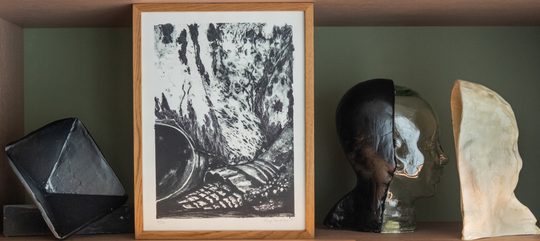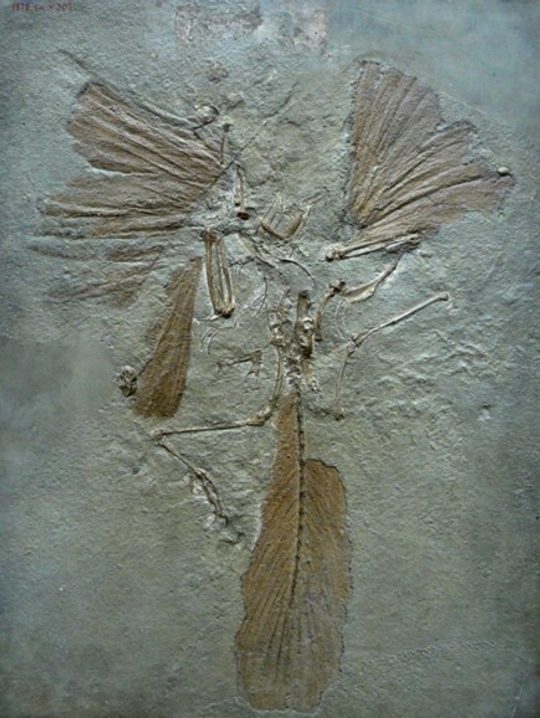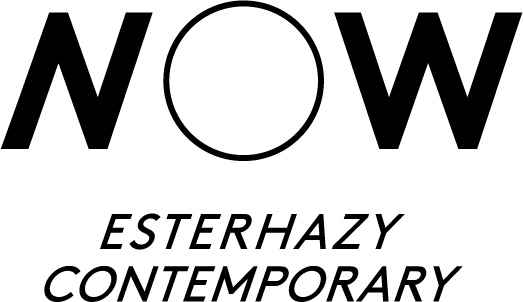In the Shadow of a Wunderkammer

On the upper shelf, well-lit, black and white small sculptures alternate with framed images. The sculptures are made of ceramics and casts, while the images are lithographs. Both series reference object groups that the artist Hugo Canoilas discovered in the treasury of Burg Forchtenstein. The first group consists of oddly shaped sedimentary stones, which stand alongside exotic shells and ostrich eggs in the cabinets. The second group is made up of wooden cases, covered with leather, that were custom-made to protect delicate objects. The treasury contains an entire cabinet full of these old folding or case-like boxes.

For his installation in the Wunderkammer VOLIERE, Canoilas has creatively translated these two object groups into other materials. For the graphic representation and condensation of the discovered assemblages of sedimentary stones, shells, and eggs, he chose lithography, a flat printing method using limestone plates. He collaborated with the Chavanne Pechmann lithographic workshop in Apetlon for the production.
The hollow forms of the cases were translated into white casts of funnels or bottles, as well as black ceramics, which Canoilas created specifically in northern Portugal with local artisans. Their occasionally silver-glossy black finish is due to a special firing technique (reduction firing) in closed earth pits, a process that dates back at least to the 16th century.
The common theme of both series is the ancient art of alchemical transformation—specifically, the material metamorphosis of one substance into another. For instance, the transformation of a compact egg into a dragon (dinosaur or bird). This theme is further enhanced by the fact that the quarries of Solnhofen in the Franconian Jura not only provide the finest limestone for lithography but are also world-renowned fossil sites. Notably, all known specimens of the so-called "Ur-bird" Archaeopteryx, a feathered dinosaur, have been discovered in these quarries.

